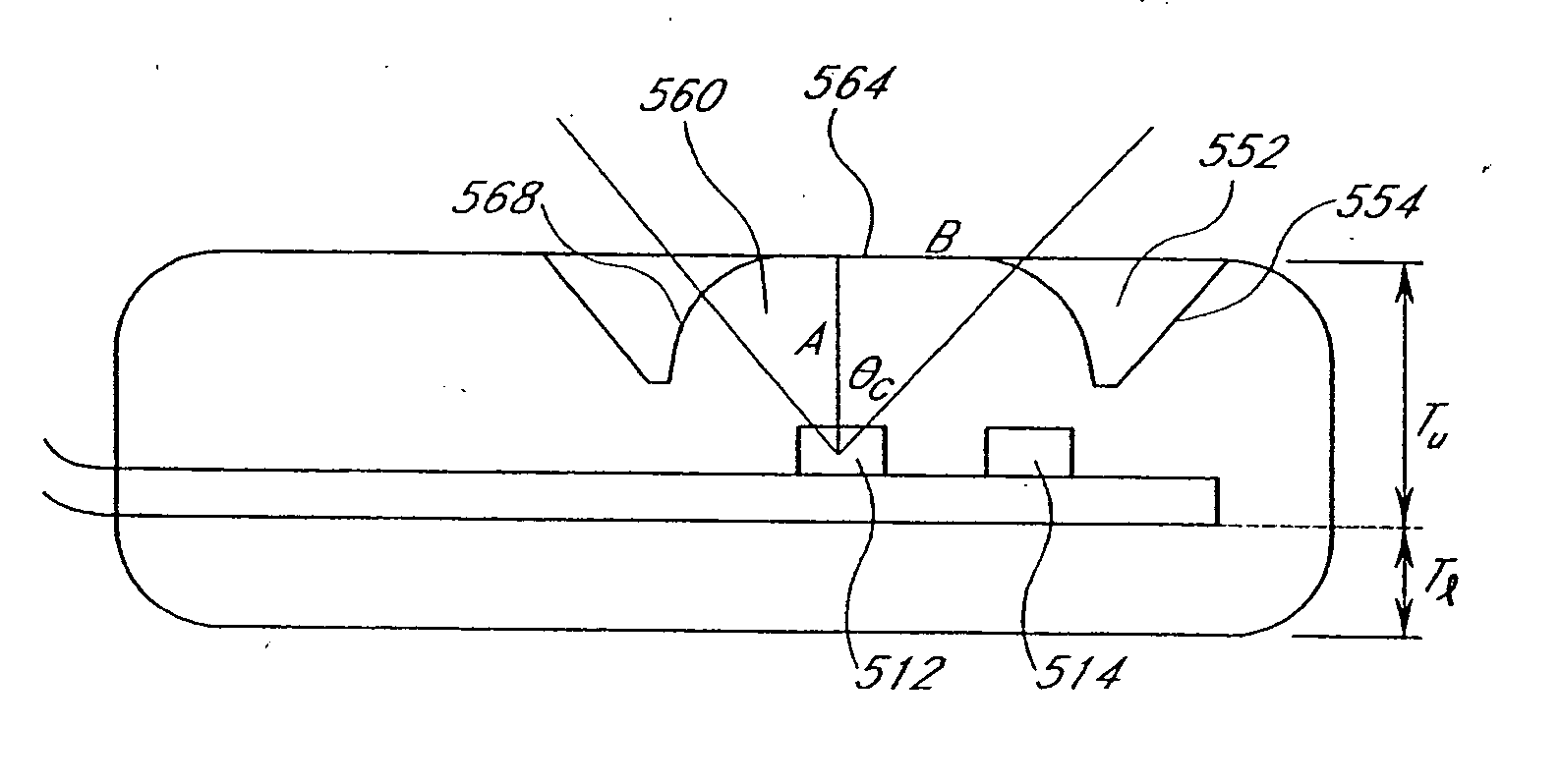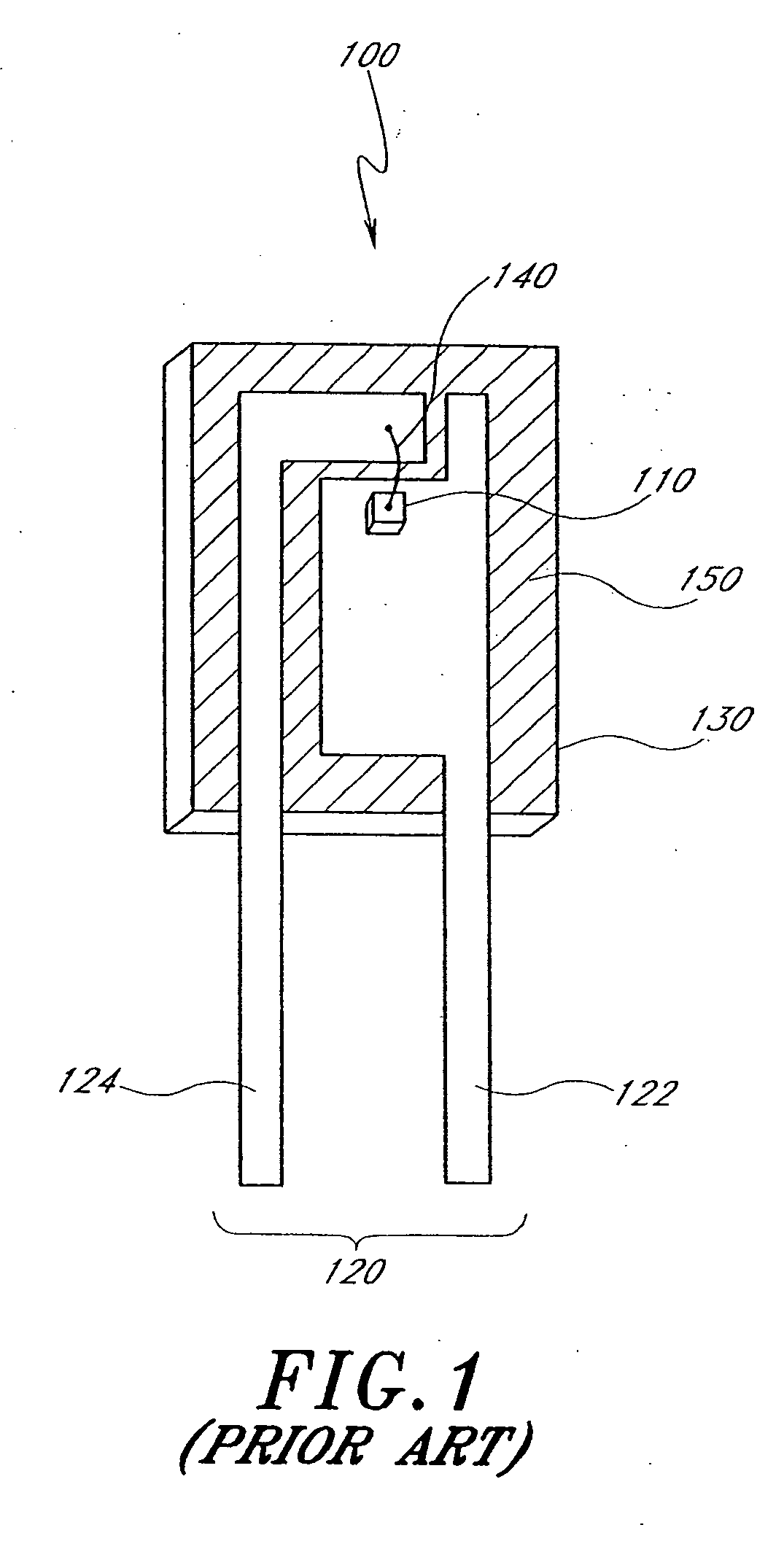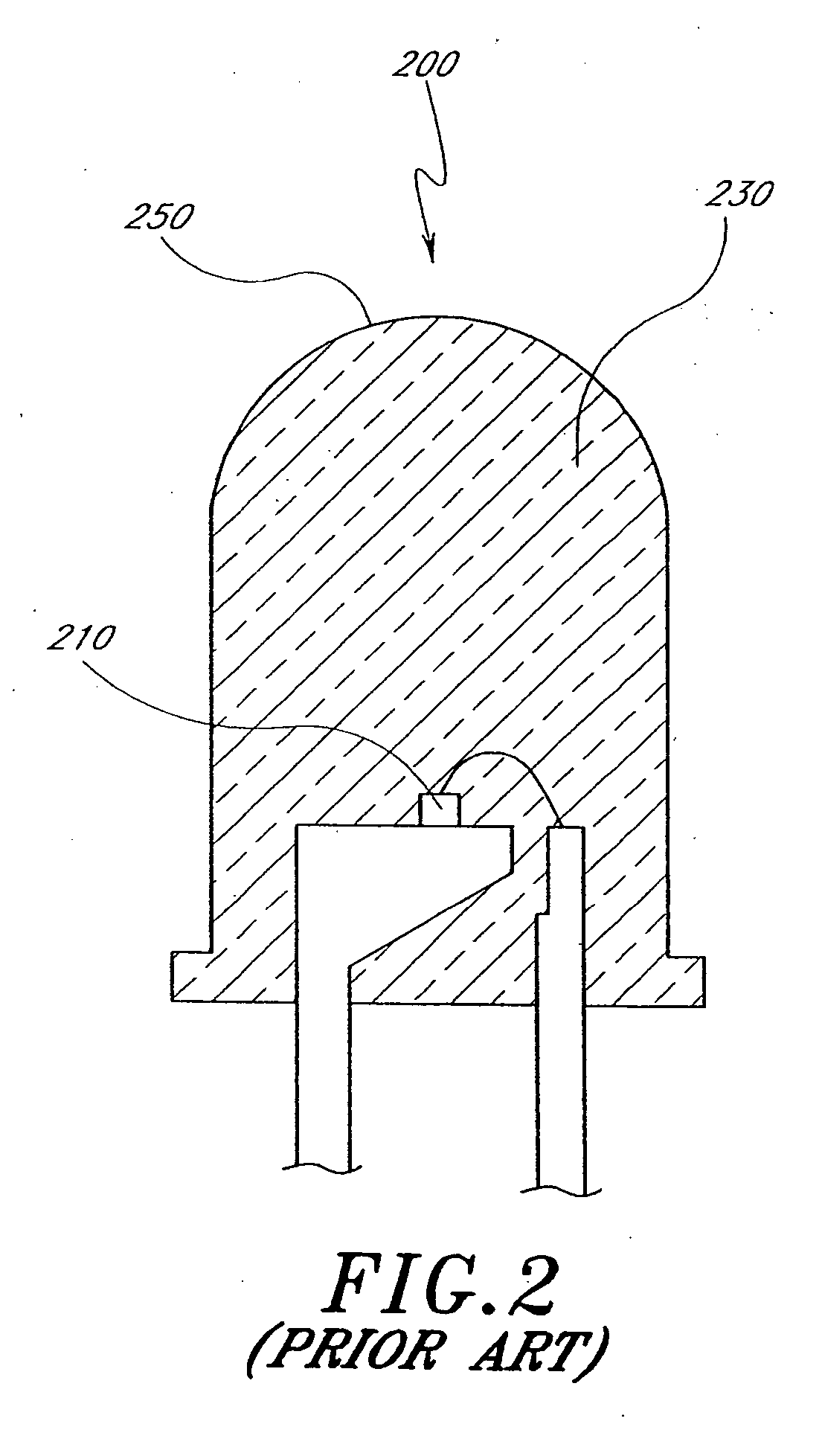Method of providing an optoelectronic element with a non-protruding lens
a technology of optoelectronic elements and lenses, applied in the field of optoelectronics, can solve the problems of low net efficiencies, internal inefficiencies, heat dissipation,
- Summary
- Abstract
- Description
- Claims
- Application Information
AI Technical Summary
Benefits of technology
Problems solved by technology
Method used
Image
Examples
Embodiment Construction
[0036]FIG. 4 illustrates an embodiment of an LED having a non-protruding or minimally protruding lens according to the present invention. The LED 400 consists of at least one semiconductor diode element 410, which is mounted to one lead of a leadframe 420 and connected to another lead of a leadframe 420 with a bond wire 440. The diode element 410, bond wire 440 and portions of the leadframe 420 are surrounded by an encapsulant 430. A lens 460 is molded into a portion of the encapsulant 430. The lens 460 has a generally flat, surface portion 462 that is at or below the plane of the surrounding surface portions 434 of the encapsulant 430. The lens extends radially from the diode element 410 out to the critical angle 464, at which point total internal reflection of photons emitted from the diode element would occur. Past the critical angle 464, the lens 460 has a steep side surface portion 466, which extends below the surface of the surrounding filler portion 434 of the encapsulant 430...
PUM
| Property | Measurement | Unit |
|---|---|---|
| critical angle | aaaaa | aaaaa |
| critical angle | aaaaa | aaaaa |
| critical angle | aaaaa | aaaaa |
Abstract
Description
Claims
Application Information
 Login to View More
Login to View More - R&D
- Intellectual Property
- Life Sciences
- Materials
- Tech Scout
- Unparalleled Data Quality
- Higher Quality Content
- 60% Fewer Hallucinations
Browse by: Latest US Patents, China's latest patents, Technical Efficacy Thesaurus, Application Domain, Technology Topic, Popular Technical Reports.
© 2025 PatSnap. All rights reserved.Legal|Privacy policy|Modern Slavery Act Transparency Statement|Sitemap|About US| Contact US: help@patsnap.com



